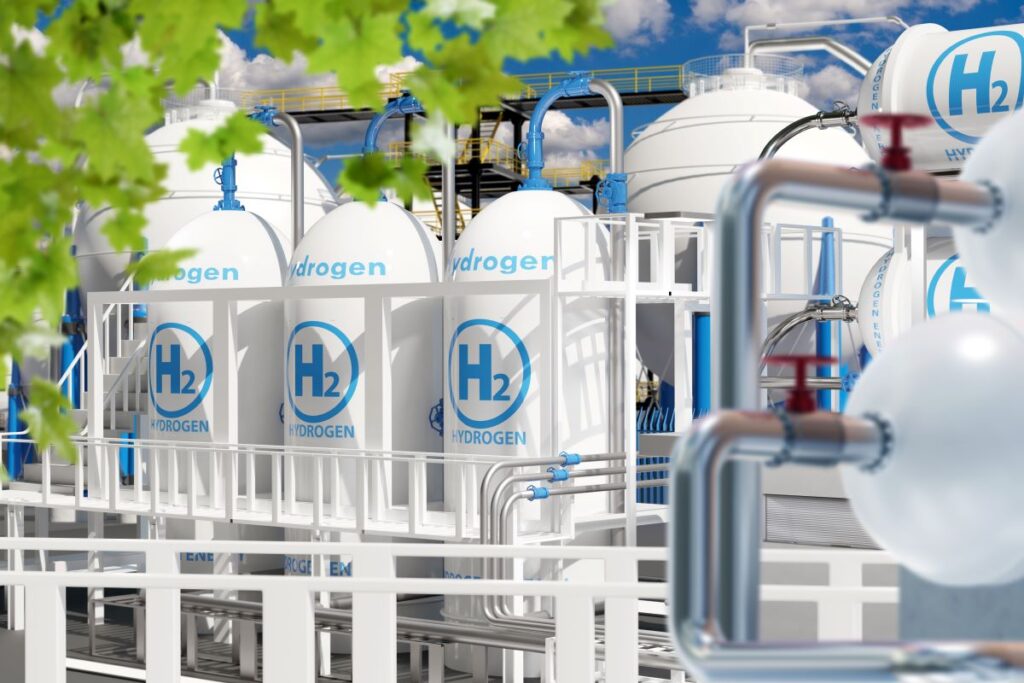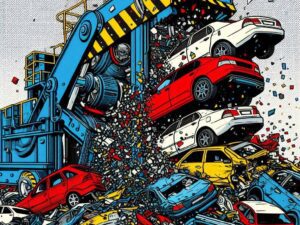How do hydrogen cars work? A simple guide

If you’re curious about alternative-fuelled vehicles, you might be wondering how hydrogen cars work. Here we explain everything about how different types of these vehicles work.
But first, it’s important to distinguish between the different types of hydrogen vehicles. There are two main types: hydrogen fuel cell cars and hydrogen combustion vehicles.
What’s the difference between hydrogen fuel cell and hydrogen combustion?
Whilst hydrogen fuel cell vehicles use the element to create electricity which then powers the vehicle, the latter burns hydrogen like gasoline to use as a power source. Both types work in slightly different ways, so we’ll cover each separately.
How do hydrogen fuel cell cars work?
Hydrogen fuel cell cars include electric batteries that are powered by hydrogen. Think of them almost like a hydrogen-electric hybrid.
This is the most common type of hydrogen vehicle on the market today.
They have one or more hydrogen tanks that are used to store the hydrogen when the vehicle isn’t in use. The fuel is usually stored as a gas at a very high pressure.
When you turn the engine on, the hydrogen stored in the tank(s) is fed into the fuel cell.
What is a fuel cell?

Fuel cells function like batteries, except they don’t need recharging. As long as fuel – in this case, hydrogen – is added into the mix, they will continue to produce energy and heat, with water as the only byproduct.
A fuel cell is made up of two electrodes: a negative electrode (i.e. an anode), and a positive electrode (i.e. a cathode). These electrodes are on opposite sides of an electrolyte, kind of like a sandwich in the following configuration, with the electrolyte acting as the filling in between two slices of bread:
Anode – electrolyte – cathode
Hydrogen fuel goes into the negative electrode, the anode, and oxygen goes into the positive electrode, the cathode. The hydrogen in the anode is then split into protons and electrons.
While the protons travel through the electrolyte to the cathode and produce water and heat, the electrons travel through an external circuit powering an electric motor. Here, the motor turns the wheels of the car to make it move.
The electrons then continue travelling down to the cathode, where they combine with the protons and oxygen to form water as a byproduct. This water is released out of the exhaust pipe.
This makes hydrogen fuel cell cars incredibly clean (as long as the hydrogen is made using renewable energy and clean processes) as they emit only water with no harmful pollutants.
What’s more, even though these vehicles include electric batteries, you only need to refuel them with hydrogen. This means you don’t have to recharge the vehicle in the same way you would an electric car; instead, you can refuel it in just a few minutes, similar to a traditional petrol or diesel vehicle.
Hydrogen fuel cell cars are generally also able to travel further on a full tank compared to their electric counterparts as most tend to have a range between 300 and 400 miles. For example, the Toyota Mirai has a range of around 402 miles, while the Hyundai Nexo has a range of 380.
How do hydrogen combustion cars work?

Hydrogen combustion vehicles, on the other hand, work in much the same way as a regular internal combustion engine (ICE) found in petrol and diesel vehicles. This is because they have an ICE that burns hydrogen gas to generate power.
Like fuel cell cars, hydrogen combustion cars have high-pressure tanks where hydrogen gas is stored. However, the comparison stops there as these vehicles don’t contain a fuel cell. Instead, the hydrogen from the tanks is injected into the engine’s combustion chamber, just like gasoline would be.
Inside the engine, hydrogen mixes with oxygen and the mixture is ignited by a spark plug. The resulting explosion pushes the engine’s pistons, creating the mechanical energy needed to move the car.
This mechanical energy is transferred to the car’s drivetrain, which turns the wheels and moves the vehicle forward.
Instead of producing carbon dioxide like gasoline cars, hydrogen combustion mainly emits water vapour. Small amounts of nitrogen oxides (NOx), which are air pollutants, are also produced because the combustion process takes place at high temperatures. That being said, there are measures that can be used to counteract the production of NOx, such as selective catalytic reduction (SCR). When applied, emissions are kept to a minimum.
How is hydrogen for cars made?

Hydrogen is the most abundant element in the universe. It’s found in water (H2O, where H2 stands for hydrogen and O stands for oxygen), natural gas or methane (CH4, where one carbon atom is bonded to four hydrogen atoms), and many other substances.
For hydrogen gas to be used as a fuel in cars, it must be separated from the other elements it’s attached to as it doesn’t exist in the world as a separate entity by itself.
Hydrogen can be separated in a number of ways, the most common of which are:
Steam methane reforming (SMR): methane is heated to produce a mixture of carbon monoxide, hydrogen, and carbon dioxide. This should ideally be paired with carbon capture and storage (CCS) technology, which captures the carbon dioxide and stores it underground.
Electrolysis: when powered by renewable energy sources, this is a carbon-free way of separating hydrogen from oxygen so is the most environmentally friendly method. It uses electricity to split water into its component parts: hydrogen and oxygen.
Once extracted, the hydrogen is usually stored as a compressed gas (or sometimes as a liquid) under high pressure in hydrogen tanks. This can then be used to power hydrogen cars.
How do you fill up a hydrogen car?

Regardless of whether you’ve opted for a hydrogen combustion car or a fuel cell vehicle, both are the same when it comes to refuelling.
All you need to do is find your nearest hydrogen refuelling station and refuel the vehicle as you would with a petrol or diesel car. Filling up an H2 vehicle can be as fast as any other car with an internal combustion engine (ICE).
It’s important to note that there aren’t many hydrogen fuel stations available in the UK yet, but the government is working to improve this.
What do hydrogen cars sound like?
This depends on whether you opt for a hydrogen combustion engine or a hydrogen fuel cell vehicle. While the former sounds more like a regular ICE vehicle, the latter is much more similar to an electric vehicle (EV).
Here’s the sound of a car that’s run purely on hydrogen:
And here’s what a fuel cell vehicle sounds like:
As you can see, they are vastly different in terms of the sound they make.
Get hydrogen car insurance with Adrian Flux
We’ve been insuring classic cars, modified cars, and all other types of unique vehicles for over 50 years, and we know the world is changing. With the ban on buying new petrol and diesel cars approaching in 2035, we’re championing hydrogen as it accurately maintains the feel and sound of a traditional petrol or diesel engine.
We’re one of the very few insurance companies offering hydrogen car insurance in the UK. If you’re the proud owner of the Mirai, the Nexo SUV, or a vehicle imported from overseas, we can help you get the right cover for your unique car. Call us for a quote on 0800 369 8590 or book a callback at a time that suits you.






